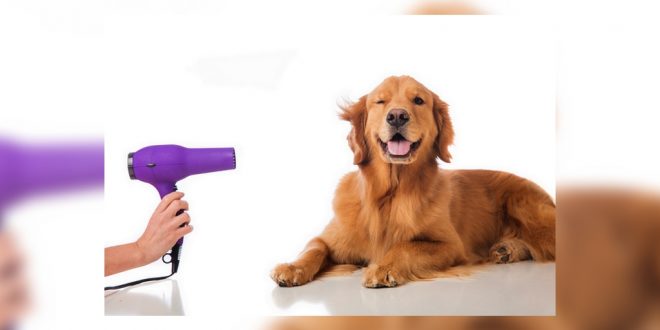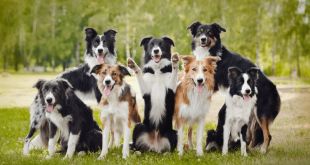A well-groomed dog not only looks great but is also much healthier and happier than other unkempt dogs.
That’s why as pet owners, it’s our job to maintain our dogs’ hygiene and keep them looking prim and proper. Professional grooming sessions can be quite expensive and time-consuming and it’s also not something we can frequently schedule, or rely on completely.
That’s why, for people like me, grooming at home is the most sensible option.
In fact, DIY dog grooming is actually quite common, and basic knowledge on this is necessary for your dog’s well-being. So, keep reading to find out some useful tips on how to groom your dog at home!
Tips on how to groom your dog at home
1. Baths are Important
Bath time is a huge deal, but luckily, they’re not needed very frequently. Too many baths can actually dry and irritate your dog’s skin. Some dogs may need baths once a month, while others may need them once a year.
However, if your dog has fallen into some sort of a massive dirty or muddy mess, immediate cleanup is required so don’t wait for the next scheduled bath.
Always make sure you’re using a dog-friendly shampoo and conditioner. Human bathing products are a big no, as they might be toxic for your dog. Also, make sure to use lukewarm water and check the temperature before getting your dog in.
Making Bath Time Easy
Here are a few tips and tricks to make bath time easier.
- Take your dog out for a walk or play with it before bath time. A tired dog is more likely to cooperate than a hyperactive one.
- Make sure you have everything at hand during the bath. You don’t want to be flailing your arms around trying to reach things while holding down a slippery dog!
- Place a non-slippery mat in the bath before you get your dog inside. If they’re not being able to stand with balance, they’ll panic even more.
- Place a hair trip, steel wool, or drain-blocking contraption to catch the doggy hair. This way your pipes won’t get blocked.
- Keep lots of towels nearby. Use a towel to put over your dog between washes, so it doesn’t shake away the water. Keep another towel for drying your dog at the end.
2. Keeping Your Dog Clean Between Baths
Dogs get up to all sorts of shenanigans and most of that usually involve getting dirty. They’ll even make a mess when eating their food. And of course, none of us can deny that our dogs have a rather unpleasant distinct doggy smell.
But this doesn’t mean we give them baths every single day. Here are two guaranteed options to keep your dog clean between baths.
Pet Wipes
Wipes are cleanliness hacks for pets and humans alike. They may not be the most thorough cleaning method, but they’re pretty good for emergencies.
Wipes are easy to carry around and a hassle-free way to get your dog’s face spotless in less than a minute. The trick is to scrub the dirty spot gently with the wipe in a circular manner.
Wipes also work great for cleaning muddy paws. You can also use them for a swift full-body cleanup. But if you do this, brush down your dog’s hair first to get rid of the accumulated dirt.
There are quite a number of pet wipes available in the market, with a variety of functions. However, baby wipes will do the trick as well. Just make sure it doesn’t come into contact with your dog’s eyes.
Waterless Shampoo
Waterless shampoos include dry, spray, foam, and even spritz shampoos. Rubbing a bit of this magical product throughout your dog’s coat will keep it relatively clean and decent-smelling.
Just make sure to wipe it off afterward with a towel. And if your dog’s coat is thicker, you’ll have to be more thorough to make sure it reaches all the layers.
You can opt for commercial shampoos or even DIY one yourself with your kitchen ingredients. I personally like using baking soda but cornstarch works as well.
But keep in mind that your dog might not react well to these, so test them out on a spot first. And make sure whatever product you use is canine-friendly!
3. Hair Care for Your Dog
You don’t want your dog’s coat to be greasy, dry, and brittle. These are all signs that your dog needs better hair care.
Regular brushing is key for keeping your dog’s coat healthy. Dogs that have long hair generally need brushing twice a week, and those that shed a lot need to be brushed once a week. And of course, dogs with double coats need more brushing than those with single coats.
Regular brushing gets rid of loose hair and distributes oils throughout your dog’s coat and skin. It also gets rid of matted and tangled hair that can be quite painful and uncomfortable for your dog.
If you brush your dog’s hair regularly, it’s sure to have a glossy and smooth coat of fur. In fact, it’s a pleasant experience for your dog and serves as a great bonding time between owners and their pets.
Get the Right Brushing Equipment
You need to buy brushes according to your dog’s coat. Here are some common brushes that might be useful-
- Wire slicker brushes are good for dogs with long or medium hair.
- Bristle brushes are suitable for short-haired dogs.
- Hair rakes are ideal for dogs that have double coats. These brushes do a good job of removing tangles and getting to the undercoat.
In general, you should have two types of brushes at home. One should have bristles that are widely spaced for brushing the outer coat. The other should be in a tight space and used for the face.
If your dog’s hair is very dry, you might want to consider using spraying some water on it first. You could also apply a spray-on de-tangler to tangle split ends and matted hair.
4. Canine Paw Maintenance
A dog’s paws are quite underrated, even though they’re the most used parts of their body.
Caring for your dog’s paws and making sure they’re healthy is important for them to walk properly and maintain their balance.
Since paws can become quite rough, make sure to keep them moisturized. Of course, there are special doggy moisturizers for this, but coconut oil works great as well.
Never use hand moisturize though, as this will make the pads too soft and ruin your dog’s balance.
Keep Those Nails Trimmed
If you hear a clicking noise when your dog is walking, it’s probably time to trim its nails. Long nails can be painful for your dog and cause problems when walking.
To trim nails, you’ll need a good pair of clippers. It’s best to have scheduled nail clipping sessions, so your dog is used to the routine.
When cutting your dog’s nails for the first time, make sure your dog is used to being touched. Introduce the clippers gradually.
It’s also helpful to have another person to help hold down your dog.
Tips for ‘Quick’ Situations
Keep an eye out for how the nail bed’s color is changing as you trim. If you see pink, you’ve probably reached the quick, which is something you don’t want to nip!
This is harder to identify if your dog’s nails are dark. This is why you should cut nails, bit by bit, and not large pieces at once.
If you do cut the quick by mistake, be prepared for some blood. However, you should take immediate action and place ice wrapped in a towel on the cut to help stop the bleeding.
After this, dip your dog’s bleeding nail into some styptic powder or cornstarch blend. When the bleeding stops, don’t let your dog walk around for the next 30 minutes. Wash the nail with lukewarm water and put on a band-aid so your dog won’t lick it.
5. Keeping Your Dog’s Oral Hygiene in Check
Dental care for your dog isn’t very complicated. All you need to keep your dog’s teeth healthy is to brush regularly. However, this might be a little difficult as dogs don’t want to stay still.
It’s best to start brushing at an early age. But even older dogs can be trained to cooperate.
Make sure to use dog-friendly toothpaste and a special doggy toothbrush. Place the paste on your finger at first and let your dog sniff and taste it.
In the initial weeks, brush your dog’s teeth with your fingers and let it get used to the texture, taste, and smell. Gradually, moving onto a doggy toothbrush will be much easier and better accepted.
Another product that works wonders for oral hygiene is dental chews. Although regular brushing is important, for the days you have to skip, these are pretty good alternatives. Dental chews are actually great for keeping bad breath at bay.
Final Thoughts
Dogs are the best pets to have. They’re fun, active, and extremely loyal.
However, looking after a dog doesn’t just involve feeding and training them. Grooming is an extremely important part of their life as well.
Keeping a dog well-groomed is not as easy as it seems. The numerous canine grooming guides and tips on the internet and the fact that there’s a whole profession based on this task should be proof enough of that.
But once you know the basics and get started, rest assured you’ll get the hang of it.
And even if you do go to a professional groomer, they’ll thank you for the extra care as well.
So go on and give your dog the care it deserves!
Author Bio:
Kaylie is all about hearts and hugs. Content creator at Dogviously. Prefers a simple life and believes in sharing. Can sync-dance with Sera – her Golden Retriever.

 DogExpress
DogExpress

















 in Chandigarh, India.
in Chandigarh, India. 
